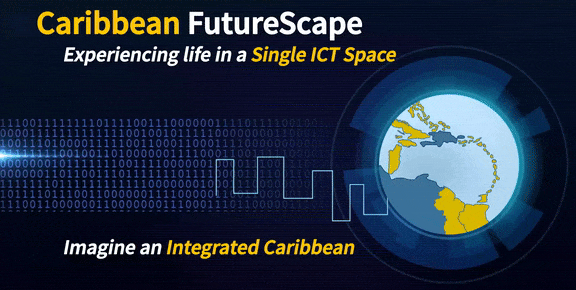Let’s start with the basics
Good Morning everyone.
A big welcome to all the new subscribers, it’s a privilege to have you here. Please share with as much of your entourage as you can. Thank you.
As promised, this is the start of a series dedicated to helping you in a practical manner, start and develop your Digital Transformation.
On to this issue.
In order to start your Digital Transformation journey, an initial diagnostic is necessary to understand the digital penetration in your business operations. Most of us have email, file servers and dedicated financial software (billing, accounts etc.). But I have found that these are mostly self-contained applications silos that don’t offer any value outside their basic usage. Digital Transformation helps to resolve this situation, enabling benefit from potential synergies. Simply put — Synergy is the creation of a whole that is greater than the simple sum of its parts. Classical strategy analysis is sufficient to start the process, with more digital specific strategies developed as you progress.
Once you have completed these analyses, the next thing to do is to determine what strategic directions you would like to pursue. You don’t need to definitively decide immediately; you can try small scale tests to determine their success and scale out as and when appropriate. Additionally, at this point, it is important to determine what KPIs to measure and follow, as this will help you determine if the test is successful or not. They will additionally be useful to determine the success of full roll out too, work done here is not lost.
After the first two steps, it’s time to determine what projects to start, when and then plan them for implementation and rollout.
Photo by Startaê Team on Unsplash
Basic Diagnostics
In classic business strategy, an initial diagnostic is required to look at the internal elements of your business and the external factors that have an impact on your business. These are called micro and macro analyse, and they are quite simple to perform. However, having them undertaken by an external party is more likely to ensure an objective result.
The most recognised tools used are called PESTEL, Michael Porter’s Value Chain and SWOT analysis. I’ll look at them individually in this series, and work through some examples.
PESTEL
So-called, PESTEL, is a framework that aims to help you think about the factors that affect your business from the exterior. PESTEL is an acronym for the part of the framework; Political, Economic, Social, Technological, Environmental and Legal. Using PESTEL, we try to identify the things taking place in the market, like growth, decline, trends, legal threats, environmental factors and so on. Let’s look at each part individually.
Political
What is important with the political factors, is to think about the impacts the political environment may have one your business, be it good or bad. Some political decisions have important effects on a business — no, I’m not going to mention Brexit ;) — and it is important to note the political position and determine what affects may impact you. There are many examples, but one that gained major attention in the media was the GDPR, General Data Protection Regulation, implemented in Europe but having global implications to businesses that had European customers. The end result was a Technological impact and cost, but the impetus was political.
To go about this, you need to research a lot about your political environment and also have a good understanding of the political environments that may affect you in the future. In the Caribbean, we are obviously affected locally by associations like CARICOM, OECS etc, but wider-ranging impacts may be felt from Europe and the US. The French West Indies are actually Europe… Its closer than you may think!
Economic
Clearly, it’s important to take in to account the economic climate both locally and more generally in your region, which gives you a better understanding of the issues of region. Again, research is the name of the game and you should avail yourself of the latest economic reports and papers in you region, then interpret them to get a handle on factors that may directly impact you, like the dollar/local currency exchange rates and their historical tendencies, tax rates, unemployment rates, level of training by population type etc.
Social
Sociological changes are happening at a pace never before seen. Generation Y and Z have social attitudes that are alien to Generation X or the baby boomers. Populations are getting older and people are living longer. These are the types of indices required to understand the impact on business. A young child these days thinks nothing of listening to music, whilst watching YouTube, all simultaneously playing Fortnite. Technology has enabled this, but youngsters have embraced and enhanced it.
Tehnological
As a technology nerd since the 80s, I have seen lots of technological changes in consumer products and also businesses. But nothing has evolved so rapidly and so completely as the changes that were enabled by the Internet. The internet enabled bigger, more distributed, and more importantly, more connected applications that we a fantasy only a couple of decades ago. Technologies like, IoT, CRM, Cloud Computing and Data Visualisation (there are many more) are important to recognise, as they may provide strategic advantages to you or your competitors.
Environmental
In an age of climate change concern, an eye on your environmental impact and what impacts may be as of a consequence if you chose one strategy over another. More and more clients, be that B2C or B2B, are requesting environmental impact assessment reports before signing contracts or purchasing products. It’s important here to note current factors and think about how they can be improved upon. Eventually standards like ISO, might be useful to discuss at this point too. Depending on your business, there are standards available to help you better align with the wishes of your customers. ISO 9001, Quality Management, is a classic, but others more specific exist, for example a client of mine would benefit from ISO 41001, which deals with Facilities Management.
Legal
Lastly, looking at the legal landscape may help you understand your roles and responsibilities in your region in a deeper manner. As highlighted above, the GDPR had political effects, technological effects, but was implemented and enacted through legal means. Other legislation and regulation need to be identified here. If your region is anything like mine, the number of texts proposed and finally made to law has exploded over the last few years. Even local laws may have a substantial effect on your business. Take for example a restaurant implanted in the town centre, a simple change to parking laws may substantially increase or decrease the number of clients passing through, and consequently your revenue.
I’ve designed a simplified example PESTEL analysis diagram, for a hypothetical fast food restaurant chain called McCowen’s. Feel free to use it and modify it as you see fit.
Simplified PESTEL for fictitious Fast Food Restaurant McCowen’s
Next issue, we’ll take a look at Porter’s Value Chain, hope to see you then.
Available for Consulting
As a consultant, I am available to perform this analysis with you. In fact, I’ve noticed that outside eyes are an excellent complement and better indicator of reality than those clouded by the viewpoint of the inside. Contact me (hit reply to this email) if you would like to discuss further, I’d be honoured to help.
Reading List
Carpooling saves more than 1.6 million tonnes of CO2 a year, whilst doubling the number of people traveling - BlaBlaCar
European carpooling service BlaBlaCar, using its blog, cites a study conducted by BIPE that concludes that its digital product — a carpooling aggregator — has doubled car occupancy to 3.9 persons per car (1.9 per car without BlaBlaCar) whilst simultaneously reducing CO2 emissions by 26%. This is a long way behind bus emissions and occupancy rates of around 60% on average but is a step in the right direction. This could only be enabled by Digital Transformation.
Woebot - Should This Exist
Sometimes Digital Transformation crops up in unexpected quarters. This is a great example, where AI is being used for counselling, helping those affected by depression and other mental illnesses. It doesn’t replace therapists, but I’ll let you listen to the podcast for yourselves. A full transcript is available for those who prefer to read.
The scooter wars are actually a century old - Fast company
In 1916 a suffragette called Lady Florence Norman travelled regularly to her office on a motor scooter her husband had purchased as a birthday present. A fascinating look at the technology and societal impacts.
The Future is Digital Newsletter is intended to be shared as widely as you see fit, and I encourage you to forward it to people you feel may be interested in these matters, CEOs, Business Leaders, Influencers. Thank you.
Thanks for being a supporter. Best regards.










